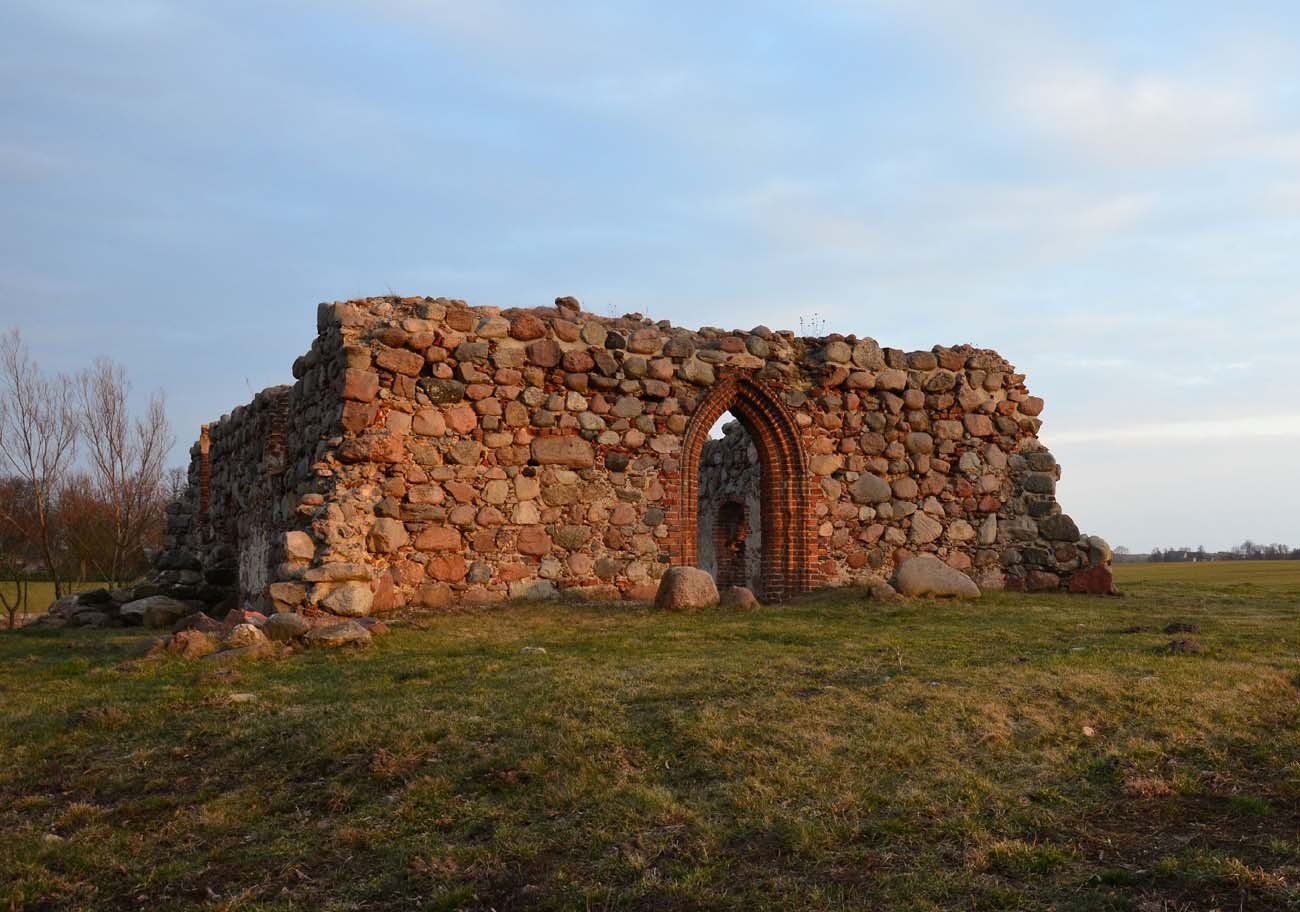History
The church was built at the turn of the 13th and 14th centuries. Its functioning was ensured by four voloks of leased land, which was used by the Rokusz family from Dźwierzno in the 16th century. Over time, the church began to decline, but was rebuilt in the 17th century by heir Konarski. During the Partitions of Poland, the property of Zajączkowo was taken by a certain Gustaw Hertzel, who wanted to rebuild the church into a granary, but eventually the Prussian government ordered the building to be demolished. Despite objections, in 1865 the church was sold and its roofs were demolished, so the remaining part quickly fell into disrepair.
Architecture
The church was built of unworked, large erratic stones, filled with rubble and bonded with lime mortar. Bricks were also used to create architectural details. It was an aisleless building on a rectangular plan, with a sacristy from the north and a porch from the south. It was covered with a gable roof based on two gables on the eastern and western sides, and a timber roof over the sacristy. The entrance led from the west through a pointed, stepped and moulded portal, and from the south through a pointed portal in the porch.
Current state
Today, the church is an roofless ruin with walls reaching about half the height of the windows. Among the architectural details, two moulded portals have survived in the best condition: the western one and the southern, once placed inside the porch.
bibliography:
Herrmann C., Mittelalterliche Architektur im Preussenland, Petersberg 2007.
Information board of the Commune Office in Chełmża at the monument.


